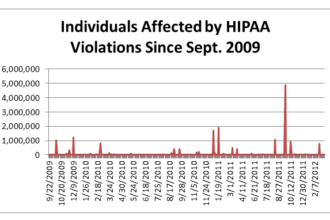 If you have been associated with the medical transcription industry for any amount of time, you must be aware of the innumerable debates on the future, as this is one of the fastest growing sectors in the healthcare industry.
If you have been associated with the medical transcription industry for any amount of time, you must be aware of the innumerable debates on the future, as this is one of the fastest growing sectors in the healthcare industry.
 If you have been associated with the medical transcription industry for any amount of time, you must be aware of the innumerable debates on the future, as this is one of the fastest growing sectors in the healthcare industry. Ever since healthcare reforms were announced by President Obama and $19.2 billion USD allotted for healthcare IT, medical transcription started to gain prominence. Especially with digitization influencing our life and with significant growth in the number of Baby Boomers reaching the retirement age, Bureau of Labor Statistics rightly projects excellent job opportunities and growth of the industry by almost 11% through 2018.
If you have been associated with the medical transcription industry for any amount of time, you must be aware of the innumerable debates on the future, as this is one of the fastest growing sectors in the healthcare industry. Ever since healthcare reforms were announced by President Obama and $19.2 billion USD allotted for healthcare IT, medical transcription started to gain prominence. Especially with digitization influencing our life and with significant growth in the number of Baby Boomers reaching the retirement age, Bureau of Labor Statistics rightly projects excellent job opportunities and growth of the industry by almost 11% through 2018.
Unrelenting demand for health documentation professionals would be steady with more and more people of the country gradually turning grey. Three major trends identified would influence the future of the medical transcription industry in the coming years- the progress of the voice recognition software, EHR and new guidelines monitored by the Department of Health and Human Service, and lastly, outsourcing of transcription functions.
Voice Recognition Software
When the speech recognition software was introduced, doomsayers were proved wrong and instead a demand for the medical transcription editor to edit the software generated documents was created.
Electronic Health Records (EHR)
With the introduction of the EHR and its meaningful uses, as defined by the Department of Health and Human Service, the need of a standardized format was highly felt. The traditional narrative method of transcription in a word document would not be treated as a part of the ‘structured data’. With the introduction of software like Emdat, the future looks promising indeed.
Outsourcing
Considerable amounts of outsourcing have been noticed in the industry with secure data transmission of healthcare information electronically. However, an adequate amount of editing is required to make them accurate, and hence the demand for well trained professionals is on the rise.
In summary, the future looks promising for the medical transcription industry and the demand will remain strong in the years to come. Reliance on sophisticated transcription solutions like Emdat will help optimize workload along with additional features for enhanced marketability and better management of business operations.
Image: Google Images
![]()










